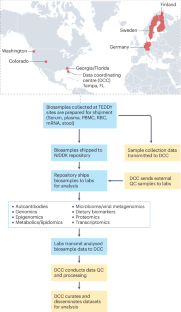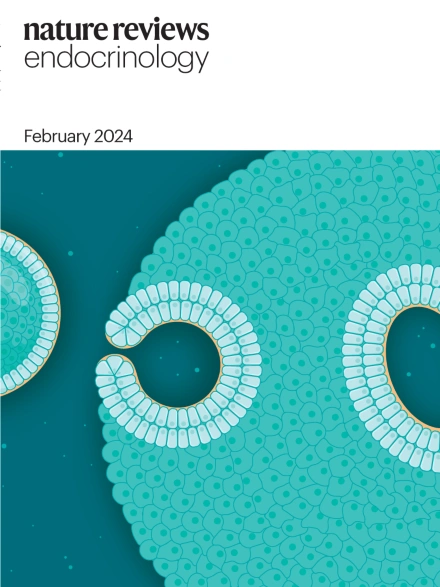回顾 TEDDY 研究:经验教训和未来方向
IF 31
1区 医学
Q1 ENDOCRINOLOGY & METABOLISM
引用次数: 0
摘要
TEDDY(年轻人糖尿病的环境决定因素)研究的目标是阐明导致胰岛自身免疫(第一主要结果)的因素,以及与进展为 1 型糖尿病(T1DM;第二主要结果)有关的因素。本综述概述了迄今为止的主要发现,尤其是与第一项主要结果相关的发现。本综述讨论了研究的背景、历史和组织结构。对 8,667 名儿童进行了招募和随访(从 4 个月大到 15 岁),结果显示,这些儿童的保持率和依从性都很高。胰岛素、GAD65、IA-2和ZnT8自身抗体的终点显示,与HLA相关的胰岛素自身抗体出现较早(1-3岁),而GAD65自身抗体出现较晚。针对组织转谷氨酰胺酶的竞争性自身抗体(标志着乳糜泻自身免疫)也出现得较早(2-4 岁)。遗传和环境因素(包括肠道病毒感染和肠胃炎)支持一种针对胰岛素的自身免疫表型和另一种针对 GAD65 的自身免疫表型的机理差异。婴儿生长、益生菌和高蛋白摄入对这两种表型的影响不同,怀孕期间发生的严重生活事件对这两种表型的影响也不同。随着 TEDDY 取样阶段即将结束,主要的全息方法正在进行中,以进一步剖析可能解释 T1DM 两种可能内型的机制。本文章由计算机程序翻译,如有差异,请以英文原文为准。


Looking back at the TEDDY study: lessons and future directions
The goal of the TEDDY (The Environmental Determinants of Diabetes in the Young) study is to elucidate factors leading to the initiation of islet autoimmunity (first primary outcome) and those related to progression to type 1 diabetes mellitus (T1DM; second primary outcome). This Review outlines the key findings so far, particularly related to the first primary outcome. The background, history and organization of the study are discussed. Recruitment and follow-up (from age 4 months to 15 years) of 8,667 children showed high retention and compliance. End points of the presence of autoantibodies against insulin, GAD65, IA-2 and ZnT8 revealed the HLA-associated early appearance of insulin autoantibodies (1–3 years of age) and the later appearance of GAD65 autoantibodies. Competing autoantibodies against tissue transglutaminase (marking coeliac disease autoimmunity) also appeared early (2–4 years). Genetic and environmental factors, including enterovirus infection and gastroenteritis, support mechanistic differences underlying one phenotype of autoimmunity against insulin and another against GAD65. Infant growth and both probiotics and high protein intake affect the two phenotypes differently, as do serious life events during pregnancy. As the end of the TEDDY sampling phase is approaching, major omics approaches are in progress to further dissect the mechanisms that might explain the two possible endotypes of T1DM. This Review outlines the screening, enrolment and recruitment challenges in the TEDDY (The Environmental Determinants of Diabetes in the Young) study. The key findings related to the first primary end point are discussed, and future directions of study are highlighted.
求助全文
通过发布文献求助,成功后即可免费获取论文全文。
去求助
来源期刊

Nature Reviews Endocrinology
医学-内分泌学与代谢
CiteScore
42.00
自引率
0.70%
发文量
158
审稿时长
6-12 weeks
期刊介绍:
Nature Reviews Endocrinology aspires to be the foremost platform for reviews and commentaries catering to the scientific communities it serves. The journal aims to publish articles characterized by authority, accessibility, and clarity, enhanced with easily understandable figures, tables, and other visual aids. The goal is to offer an unparalleled service to authors, referees, and readers, striving to maximize the usefulness and impact of each article. Nature Reviews Endocrinology publishes Research Highlights, Comments, News & Views, Reviews, Consensus Statements, and Perspectives relevant to researchers and clinicians in the fields of endocrinology and metabolism. Its broad scope ensures that the work it publishes reaches the widest possible audience.
 求助内容:
求助内容: 应助结果提醒方式:
应助结果提醒方式:


